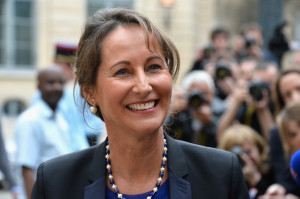The European Union (EU) on Friday, March 6, 2015 submitted its new climate action plan to the UN Framework Convention on Climate Change (UNFCCC).

This comes as EU environment ministers also on Friday endorsed the bloc’s promise to slash greenhouse gas emissions by 40 percent by 2030, compared to Europe’s 1990 levels.
The target has to be achieved domestically rather than through offsets that allow member states to buy into carbon-cutting schemes outside Europe.
The EU’s Intended Nationally Determined Contribution (INDC) comes well in advance of a new universal climate agreement which will be reached at the UN climate conference in Paris in December, this year. All submitted INDCs are available on the UNFCCC website, at: http://www4.unfccc.int/submissions/indc/Submission%20Pages/submissions.aspx
The new agreement will come into effect in 2020 and will pave the way to keep a global temperature rise this century under 2 degrees C.
Governments have agreed to submit their INDCs in advance of Paris with many developed and bigger developing countries expected to do so in the first quarter of this year.
In February, in Geneva, countries under the UNFCCC also finalized the negotiating text for the Paris agreement. The next round of formal negotiations will take place at UNFCCC headquarters in Bonn, Germany, in June.
INDCs have been chosen as the vehicle for national contributions to the international Paris agreement. They include, for example, details of emission reductions the country will undertake and can include other action plans covering areas such as adaptation to climate change.
Christiana Figueres, Executive Secretary of the UNFCCC has encouraged countries to come forward with their INDCs as soon as they are able, underlining their commitment and support towards a successful outcome in Paris. “Momentum towards Paris is building everywhere. I look forward to
many more INDCs being submitted over the coming weeks and months,” she said.
Countries have agreed that there will be no back-tracking in their contributions. This means that the level of ambition to reduce emissions will increase over time.
The negotiating text from Geneva also signals the ambition among many governments for a long-term goal to dramatically reduce greenhouse gas emissions over the century.
All information such as documentation on designing and preparing INDCs as well as on sources of support for INDC preparation, is available here: http://unfccc.int/focus/indc_portal/items/8766.php
French Energy Minister Segolene Royal told reporters in Brussels: “I think that Europe is facing up to its responsibilities. That it is aware that it is the source of a lot of greenhouse gas emissions since the start of the Industrial Revolution.
“It is also aware that it has the biggest responsibilities to face up to in order to get the rest of the world on board,” she said.
The plan to cut Europe’s emissions levels was finally agreed by EU leaders back in October.
But Germany reckons there could be scope for even further negotiation.
“If other countries come up with more ambitious reduction plans, we will think again about even more ambitious measures,” said the country’s environment minister, Barbara Hendricks.
Privately, however, EU diplomats wonder just how the target will be achieved and the burden will be shared.
